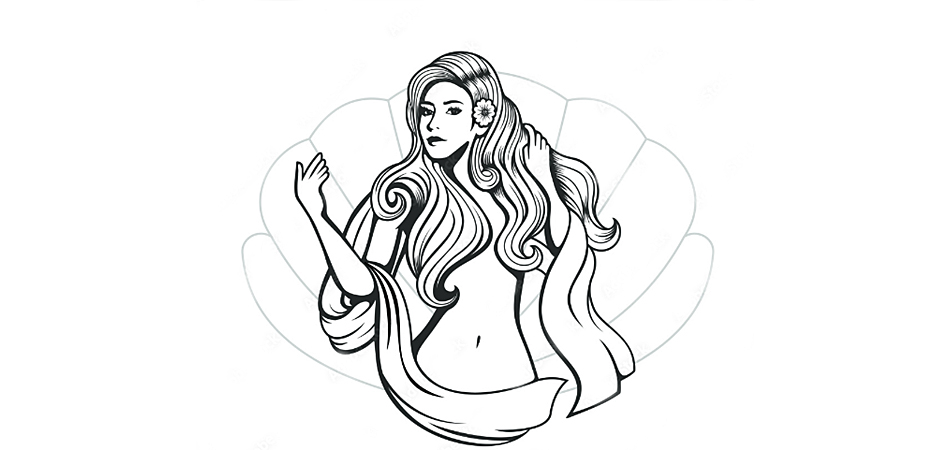Aphrodite is one of the few goddesses of ancient times who is still well known albeit incompletely in the present day.Her origins are somewhat unclear, as different accounts of her birth exist in Greek mythology.
One of the most popular versions of Aphrodite’s origin story is that she was born from the foam of the sea near the island of Cyprus, after the Titan Cronus castrated his father Uranus and threw his genitals into the sea. According to this myth, Aphrodite emerged fully-grown from the sea foam and was immediately adorned with beautiful clothes and jewelry by the Horae, goddesses of the seasons.
Another version of her origin story is that she was the daughter of Zeus, the king of the gods, and Dione, a Titaness associated with the oracle at Dodona. According to this myth, Aphrodite was born on Mount Olympus and was considered one of the most beautiful and desirable of the Olympian goddesses.
There are also other stories and variations regarding her origins, but the common thread is that she was associated with love, beauty, and pleasure from her earliest appearances in Greek mythology. However, some scholars believe that Aphrodite’s worship came from long before the Greeks, and that she was derived from the ancient Middle Eastern goddesses Ishtar and Astarte.
Neoplatonists regarded Aphrodite as one of the highest forms of being and the source of beauty and love. They also identified her with various aspects of the One, the ultimate principle of reality in Neoplatonism.
In Neoplatonism, Aphrodite was often identified with the concept of beauty, which was seen as a reflection of the divine. For example, Plotinus wrote that beauty was a manifestation of the One, the ultimate principle of reality. He saw Aphrodite as one of the many ways in which the divine manifested itself in the world, and as a symbol of the power of beauty to elevate the human soul.
Aphrodite was also associated with love in Neoplatonism, and in particular with the concept of divine eros, or spiritual love. According to Neoplatonic thought, the love that human beings feel for each other is an imperfect reflection of the divine love that emanates from the One. Aphrodite was seen as a symbol of this divine love, which can lead human beings towards a greater understanding of the nature of reality.
Overall, Aphrodite’s association with beauty and love made her a significant figure in Neoplatonic thought, and she was often invoked as a symbol of the divine in poetry, art, and philosophy.
Proclus devoted a whole treatise to Aphrodite, called On the Sacred Art Concerning Aphrodite. He distinguished between two aspects of Aphrodite: Urania (Heavenly) and Pandemos (Common). Urania is the higher form of Aphrodite, who represents the unity and harmony of all things in the intelligible world. Pandemos is the lower form of Aphrodite, who represents the multiplicity and diversity of things in the sensible world.

Aphrodite is often viewed as a metaphysical concept, as some higher force of beauty and love. She represents not only the love between a man and a woman, but also the greater love that encompasses compassion, empathy, and harmony. She is also connected to the One, the ultimate principle of reality in Neoplatonism, which is a strand of Platonic philosophy that emerged in the 3rd century AD. Neoplatonists regarded Aphrodite as one of the highest forms of being and the source of beauty and love. They also identified her with various aspects of the One, such as intelligible Beauty, creative power, and unity.
In Neoplatonism, Aphrodite was viewed as a manifestation of the divine, a metaphysical concept representing beauty and love in its highest form. According to Neoplatonic philosophy, there is a hierarchy of being in the universe, with the ultimate reality being the One or the Good. Aphrodite was seen as a lower manifestation of the One, representing the principle of beauty and love in the material world. As such, the worship of Aphrodite was not limited to physical love and sexuality, but also included the ideal of spiritual love and compassion.
Aphrodite in modern times
The worship of Aphrodite as a specific deity is not as widespread today as it was in ancient times. However, some modern pagan and neopagan religions and spiritual movements do honor or invoke Aphrodite as a goddess of love, beauty, and sexuality.
For example, in Wicca and other forms of modern witchcraft, Aphrodite is sometimes invoked as one of the “Great Goddesses” or “Triple Goddesses” alongside other deities like Isis, Demeter, and Hecate. In some Hellenic pagan and neopagan groups, Aphrodite is honored as one of the Olympian deities and may be invoked for matters related to love, relationships, or fertility.
There are also modern spiritual movements that incorporate elements of ancient Greek religion, including the worship of Aphrodite, such as the Orphic and Dionysian Mysteries. Some modern Pagan or neopagan movements may incorporate the worship of ancient Greek deities, including Aphrodite, into their practices. Neopaganism is an umbrella term that encompasses various contemporary religious movements inspired by or reconstructed from pre-Christian and non-Christian traditions.

